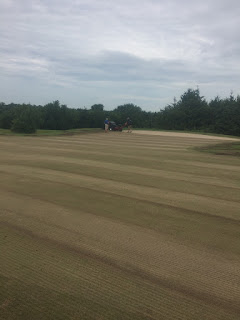This is the time of year when we in maintenance can take a deep breath and reflect on the previous season, celebrate our successes, and address any issues we may have had. A great deal of time is spent planning for the next year and looking at ways we can improve upon the last season. We attend various educational conferences to learn about new products and/or techniques being used on the golf course that can help us tackle issues that we may face here at Sycamore Ridge. It is also the time of year when we can address other areas on the course that are sometimes difficult to address during the season. Some of these areas could include tree and brush clearing, drainage work, and general upkeep of on course accessories. A large part of the winter is also used for equipment maintenance. Each piece of equipment is serviced, mowers are washed and waxed, and blades and reels are sharpened. All of the the work and preparation that takes place over the winter months allows us to be as prepared as we can be for the challenges of the season ahead.
The winter months also bring with them a need for extra diligence on the part of the golfer to be aware of stressed areas on the golf course. The turf will eventually go dormant and any recuperation from traffic patterns, ball marks, divots, and general wear and tear is greatly diminished. Please help us out by fixing ball marks on the greens, filling or replacing divots and paying attention to traffic patterns as you play the course this winter and remember to take the path less traveled!










